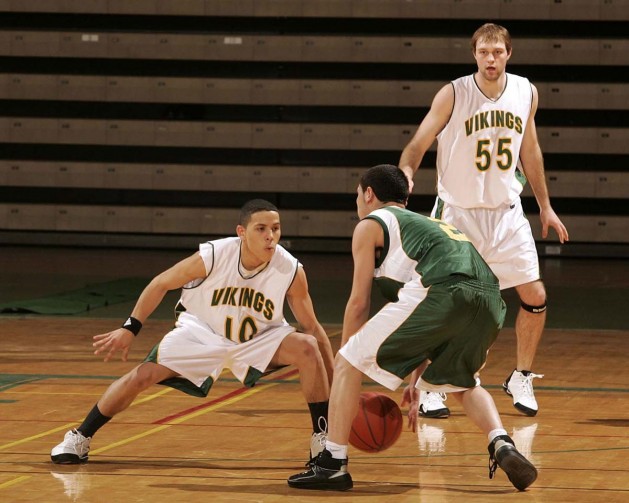Home »
Misc »
How to play off ball offense in basketball
How to play off ball offense in basketball
Learning To Be An Effective Off-Ball Player
Learning To Be An Effective Off-Ball Player
Depending on your team’s offense and the position that you play, it’s not hard to believe that you might not have the ball very often. In fact, it’s incredibly easy to assume that you won’t. If all positions shared the ball equally, then you’d still only have the ball a modest 20% of the time — however, that’s hardly ever the case. Typically, point guards can hold the ball for the majority of a shot clock and power forwards and centers that get the ball in the low-post hardly ever pass up a shot. So where does that leave you?
To grow and mature as an aspiring basketball player at any level, you must, absolutely, no excuses, learn to play without the ball in your hands. Go down to your local pick-up court or low-level game and you’ll probably see much of the same thing anywhere you go: people standing around waiting for something to happen. Ball-watching is a criminally common mistake that players of all ages make — why wouldn’t you want to watch your teammate? It often leads to stagnant offenses and poor shot selection, which is a completely avoidable fate if the non-handling players commit to moving without the ball.![]()
Zig + Zag The best course of action? Work to get open for easy passes and scoring opportunities. Depending on the offense you run, you may have specific sets, but work to keep moving. Run V-Cuts to keep your defender honest, look for the opportunity to go back door, and set off-ball screens to free up your teammates. Make the defense work, whether they are in zone or man defense. Keep an eye on the ball because you may make a move that allows you to get an open shot. Too often, players make a great cut, but don’t look for the ball and the pass is never made.
Maintain spacing on the floor to limit the defense’s chances for an easy double team or steal. Keeping your head on a swivel to know where the ball and your teammates are is key to proper spacing. But make sure you don’t forget to talk to your teammates!
Post-Up, Not Stand-StillPost players should first work to seal their defender and get in a post-up position.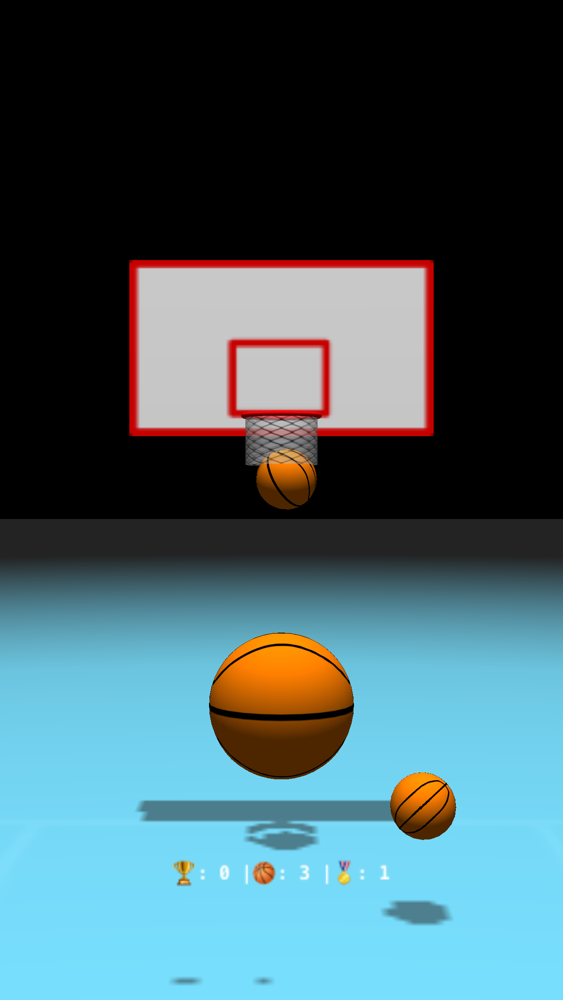 Be sure to not camp out in the lane and get a three second violation by sliding to the short corner, up to the elbow, or even setting an off-ball screen for another player operating in the post.
Be sure to not camp out in the lane and get a three second violation by sliding to the short corner, up to the elbow, or even setting an off-ball screen for another player operating in the post.
Be ready to jump in after loose balls and never become a player that doesn’t hustle. If a teammate loses his or her dribble or gets double teamed be quick to slide to them and help relieve ball pressure.
Know your teammates tendencies, like where and how they like to shoot. This will allow you to be ready to crash the boards, especially if you’re on the off-ball side of the floor. This is a great way to pick up some extra rebounds and shot opportunities. If you’re on the ball-side of the floor during a shot, quickly start sliding back into your defensive set to eliminate the fast break. If your team gets the rebound, get back on offense and be ready to shoot if the opportunity arises.
Monkey See, Monkey Play like The SpursIf you’ve never seriously watched the San Antonio Spurs play basketball, then, honestly, you’ve never truly lived. Gregg Popovich, Tim Duncan, Tony Parker, and a handful of other Spurs’ players have made the last fifteen years of professional basketball an art-form.
Gregg Popovich, Tim Duncan, Tony Parker, and a handful of other Spurs’ players have made the last fifteen years of professional basketball an art-form.
They’ve got big-time shooters, legendary Hall of Famers, and historical play-makers, but, above everything else? They have a team. They have fifteen guys every year that commit to playing hard and putting in the effort they need to make a deep playoff run. These tendencies most certainly include their ability to change the game while off-ball. If you ever think you’re moving enough, check out this video and get re-motivated. Who knows, it could be your backdoor cut that wins the game for your team — and, at the very worst, it won’t do anything negatively, unlike those who stand still. Simply put, the Spurs should be the model for every team in the world — from youth levels, through high school and beyond; never stop moving!
(Related: Read about being an effective point guard here.)
Huddle Up In the end, not all offensive players must have the ball in their hands to be effective. In fact, for teams like San Antonio, their players are usually more dangerous without it — a truly special distinction. Use these basketball tips to stay active and improve not only how you play offense, but the overall efficiency of your team. If you’re still struggling with your off-ball game, consider booking one of CoachUp’s private trainers to help you out. Our team’s extensive knowledge and hours logged in the gym will help you get on the right track in no time — what are you waiting for?
In fact, for teams like San Antonio, their players are usually more dangerous without it — a truly special distinction. Use these basketball tips to stay active and improve not only how you play offense, but the overall efficiency of your team. If you’re still struggling with your off-ball game, consider booking one of CoachUp’s private trainers to help you out. Our team’s extensive knowledge and hours logged in the gym will help you get on the right track in no time — what are you waiting for?
CoachUp is the safest and easiest way to find a coach for personalized training. With our 100% money-back guarantee and vetted coaches, anyone can achieve their full athletic potential. Find your perfect coach today and become the athlete you want to be!
How useful was this post?
Click on a star to rate it!
Average rating 3 / 5. Vote count: 4
No votes so far! Be the first to rate this post.
How To Use 12 Basketball Cuts To Score More Points
By Daniel Benjamin
Home > Coaching > Basketball Offense > Moving Without The Basketball: How To Use 12 Basketball Cuts To Score More Points
Basketball is the ultimate game of movement, both with and without the ball.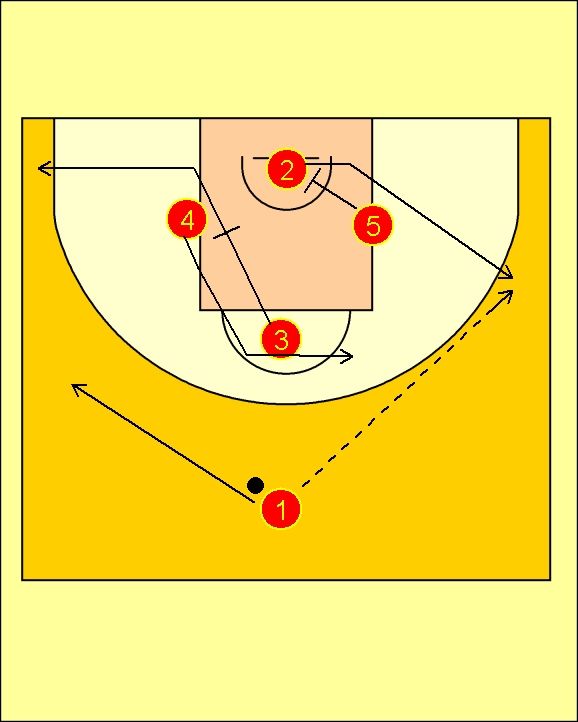 And unfortunately, proper cutting movement is one of the most undervalued skills in youth and scholastic basketball.
And unfortunately, proper cutting movement is one of the most undervalued skills in youth and scholastic basketball.
Why is cutting so important?
Cutting does a number of things to cause havoc for a defense.
- It helps an offense get a player open.
- It also creates proper spacing - which in turns gives the offense enough room to operate properly.
- Cutting makes defenses pay attention to each player on the court rather than focusing on help defense.
The most important thing cutting does for your offense is score buckets without running set plays.
Teams should be able to score at least 10 buckets a game off cuts - even off of common cuts like the V-Cut, L-Cut and back and/or dive cuts --if done properly.
Players like Reggie Miller, Ray Allen and Rip Hamilton made a career off of reading a defense and then using appropriate cuts to get open.
In order to be able to score off of cuts, there are a few things that you need to remember.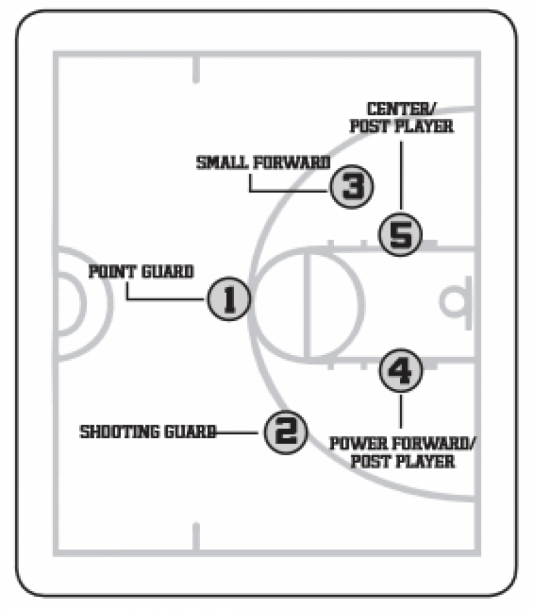 . .
. .
Being able to read the defense and making the proper cuts. There may be times that you need to setup your defender before going into the cut.
You need correct timing. Try to “time” your move, so that you are open when you are able to receive the pass.
Change Speeds. This makes you unpredictable and difficult to guard.
Cut hard: A quick, hard first step is key. Explode out of the cut.
Have your hands ready to catch and be in position to shoot or be in triple threat position.
Once you catch the ball after using cuts such as V-cut, L-Cut (up-and-out), flash cut or shallow cut, rip-the -ball through low and hard (so you are in triple threat position). As you rip-the-ball through, swing your front foot past the defender’s front foot and use a quick-low and explosive first step to blow by the defender. You can also use the rip-through to create space and shoot a jumper off the catch.
You can also use the rip-through to create space and shoot a jumper off the catch.
12 Common Basketball Cuts and How to Score
The following will describe and demonstrate how you can score baskets with these 12 common basketball cuts.
1. V-Cut:
The V-cut is a common cut that is used by a wing player to get open against man-to-man defenses.
There are two basic V-cuts a player can use to get open: a quick or short V-Cut and a Jam-Down, V-Cut.
When using the short V-cut...
- Start with a few medium speed steps toward the middle of court - go no lower than the third hash mark in the lane -- and then cut hard (in a shape of a V) back to the ball.
- When making the final leg of the cut, plant your inside foot hard, and step off quickly with your other foot to your foot.
- Prior to the making final cut, you want your hands in tight to your body but already set to catch the ball so you push-off your defender (legally) in order to help create space.
 If you extend your hands, it is an offensive foul.
If you extend your hands, it is an offensive foul.
- Once you catch the ball, rip-the-ball through and read what the defense does. If the defender backs off and you are in your range take the jumper.
- If the defender is still in your grill after the rip-through, attack the defender's front leg by getting your front foot past the defender with a low-quick, explosive first step. You can either go-to-the basket or pull-up for a J.
In the Jam-Down V-Cut, walk your defender down to the block. Then plant your inside and quickly make the V-Cut back to the ball.
Both V-cuts are best used on the weak-side of the offense for an isolation situation.
2. L- Cut (up-and-out):
The L-cut is a great way to get open on the perimeter when starting on the low block. It is called an L-Cut because the cut looks like an L.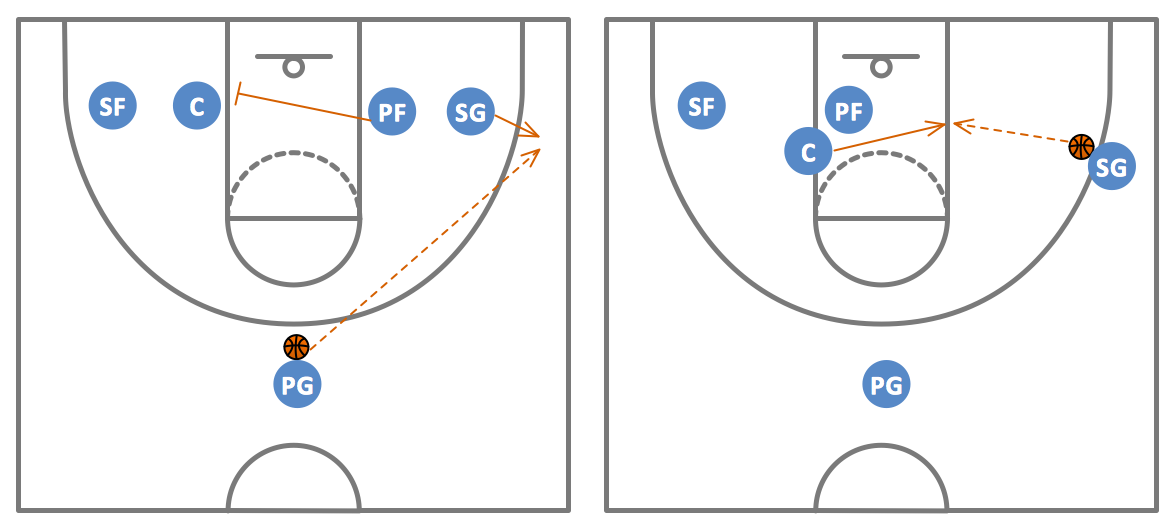
When making this cut, you don't need to be quick but you need exquisite footwork and use your body to hold off the defender.
- Take your defender up the lane - may go to elbow or cut it off short.
- Once you are ready to make the cut, get your top foot over the defender's foot and then use your body to nudge the defender a slight nudge to create space.
- Have your hands ready as you cut out to the wing.
- Rip-the-ball through after catching the ball, if you created enough space through your cut get ready to step into your shot for a jumper.
You can also use the cut when starting in the high-post by going down the lane and then out.
3. Shallow Cut:
A shallow cut is a perimeter cut that is used when you are exchanging positions. It also can be used when replacing a player, who has vacated his position by dribbling or passing and cutting. You can use this type of cut versus man or zone defenses.
You can use this type of cut versus man or zone defenses.
When using a shallow cut, you make an underneath cut and then popping out to where the player was previously located.
You can also use a shallow cut to relocate on the other side of the floor. For example, you are on the right wing and the point guard from top of the circle dribbles toward you. You make an underneath cut (through the lane) and pop out on the left side of the floor
Scoring options off a shallow cut are the same as if you used a V-cut or L-Cut.
4. Dive Cut or Basket Cut:
A dive cut is any cut toward the basket and will many times result in an easy lay-up for you or a teammate.
5. Back cut:
A back cut is used when you cut behind the defender and it is primarily used when you start out on the perimeter. It is a cut that should result in a great scoring opportunity for you or a teammate. It is also a cut where you may have to set-up your defender. You must use an explosive first step.
It is also a cut where you may have to set-up your defender. You must use an explosive first step.
You can use the back cut in a number of situations. Against man-to-man defenses...
- You use back cuts when a defender is over playing you or denying you the pass on the perimeter.
- You can also cut when a teammate is dribbling at you. In this situation, you may have to take a few steps toward the ball before making the cut.
A great time to make a back cut is when you are on the “weak-side” wing - when the ball is either up top or in the high post (against man or zone defenses). The defense is adjusting to dribble or ball movement and preoccupied with helping/collapsing on the high post.
Another way you can use a back cut - either “weak-side” or “ball-side” - is when you are in the corner and rub your defender off a teammate (back-screen) who is stationed in the low-post.
For back cut to be an effective scoring option, timing between the cutter and passer must be perfect. The passer must be an accurate passer.
The passer must be an accurate passer.
6. Face Cut (Front Cut):
A face-cut is where you cut in front of the defender in order to be on the ball-side of the defender. It is typically used in a “give-n-go” situation and generally results in a layup for you or a teammate. Though there are times, where a short pull-up jumper is available.
Unless your defender is completely sagging off, you will likely need to set-up your defender before cutting. A quick jab-step or a couple of steps away from the ball should give you enough space to pull-off a face-cut.
The face-cut is a hard cut.
7. Deep Cut:
A deep cut is a cut where a wing player cuts underneath the basket from one side of the court to the other side. The best place for the cutter to end up is either in the opposite corner or for a 15-to-18 foot mid-range jumper between the wing and corner.
This cut is especially successful against zone defense because the defense often loses sight of the player cutting particularly if they are preoccupied with the ball and other players.
The deep cut can also be effective against man-to-man defenses.
When making a deep cut, you can use your low-post players as screeners by running your defenders into/off them. Or during a set play, they can set a screen.
8. Curl Cut (Circle Cut):
This type of cut is where a player curls around a screener. It is one of the most effective cuts to get a shooter the ball in ideal position to score.
A curl cut can occur anywhere on the floor from low-post to the three-point line.
In order for the cut to work, you must read the defender. If the defender is trailing, you then curl off the screen for the shot.
The key to a good curl is quick movements and staying low (around the screen). You must also come off the screen as tight as possible so that you don't take yourself into a help defender.
You must also come off the screen as tight as possible so that you don't take yourself into a help defender.
If the defender tries to go under the curl screen or switches, the best option could possibly be the next cut.
9. Flare Cut:
The flare cut is very similar to the curl cut. The only difference is if the defender takes away the curl, you flare (pop behind the screener) for a shot or drive.
A flare cut can also be used against zone defenses.
10. UCLA Cut:
The UCLA cut involves two perimeter players along with a player in the high post. It usually results in a lay-up for the cutter.
It starts with the player on top of the key passing to the wing player and then going directly to the strong side block off of the high post's screen.
11.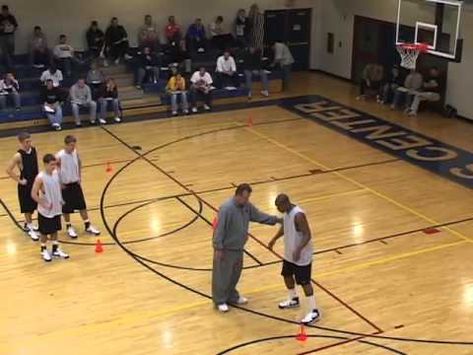 Flash Cut:
Flash Cut:
A flash cut is made by any player who starts in the post and flashes towards the ball in the high-post. The cut involves quick and explosive movements.
You have several options once you receive the ball in the high post. You can either pass it to a cutter/ hand off, kick it back out/reverse the ball or rip-the-ball through and pivot to get in triple threat position (drive or shoot).
12. Larry Bird Cut:
This cut starts out on the perimeter and involves either a post player or a perimeter player who has the ability to post up a smaller player.
The cut starts with the player on the wing making a quick cut down towards the low block. Once you are settled where you want to post, make a quick stop with your defender tight against your body. You then pivot, sealing the defender on your backside.
After sealing the defender, space out to the corner for a 15-to-18 foot jumper.
What do you think? Let us know by leaving your comments, suggestions, and questions...
Rules of Basketball
How the rules have changed in your favorite game
How the rules have changed in your favorite game
WE ALL LOVE TO PLAY BASKETBALL, BUT DO YOU KNOW THE RULES EXACTLY?
Basketball was invented by James Naismith in 1891. Then everything was different: playgrounds, baskets, balls…
!!! Read about the evolution of balls in the article:
Basketball was invented by James Naismith in 1891. Then everything was different: playgrounds, baskets, balls…
!!! Read about the evolution of balls in the article:
The history of basketballs
The history of basketballs
What balls are played now and how it happened
The beginning
The rules have also changed a lot during this time. Initially, there were only 13 of them in basketball:
- The ball can be thrown in any direction with one or two hands.

- The ball may be hit with one or both hands in any direction, but never with the fist.
- The player cannot run with the ball. The player must throw the ball from the point at which he caught it, except for a player running at high speed.
- The ball must be held with the hands. You can not use the forearms and body to hold the ball.
- In any case, hitting, grabbing, holding and pushing the opponent is not allowed. The first violation of this rule by any player shall be called a foul; the second foul disqualifies him until the next ball is scored, and if there was an obvious intention to injure the player, then a disqualification for the whole game. It is not allowed to replace a disqualified player.
- Punching the ball is a violation of points 2 and 4, the penalty is described in point 5.
- commit no foul).
- A point is scored if a ball thrown or bouncing off the floor hits the basket and stays there.
 Defending players are not allowed to touch the ball or basket while shooting. If the ball touches the edge and the opponents move the basket, then a point is scored.
Defending players are not allowed to touch the ball or basket while shooting. If the ball touches the edge and the opponents move the basket, then a point is scored.
- If the ball goes out of bounds, it must be dropped into the field by the first player to touch it. In the event of a dispute, the referee must throw the ball into the field. The thrower is allowed to hold the ball for five seconds. If he holds it longer, then the ball is given to the opponent. If either side tries to play for time, the referee must give them a foul.
- The referee must monitor the actions of the players and fouls, and notify the referee of three consecutive fouls. He shall have the power to disqualify players under rule 5.
- The referee must watch the ball and determine when the ball is in play (inbounds) and when it goes out of bounds (out of bounds), which side should be in possession of the ball, and any other action that the referee would normally take .
- The game consists of two halves of 15 minutes each with a break of 5 minutes between them.
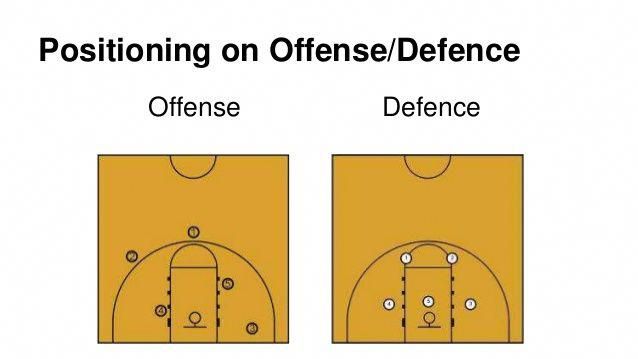
- The side with the most goals during this time period is the winner.
The most important rule change in the history of basketball is the introduction of dribbling. In the original version of the game, this was prohibited by paragraph 3 of the rules.
One of the first changes in the game and the rules was the replacement of the basket with a ring with a net. It seemed to be very inconvenient to climb after the ball every time after a hit. Around the same time, free throws, dribbling appeared, and the composition of the teams was fixed for 5 players on the court at the same time. Before that, in some matches, up to 50 people could be on the court at the same time. All this happened back in 1896-1897.
The emergence of FIBA (International Basketball Federation)
Basketball in the early 20th century became more popular and the rules in each country could be different. This was one of the reasons why FIBA appeared in 1932 year.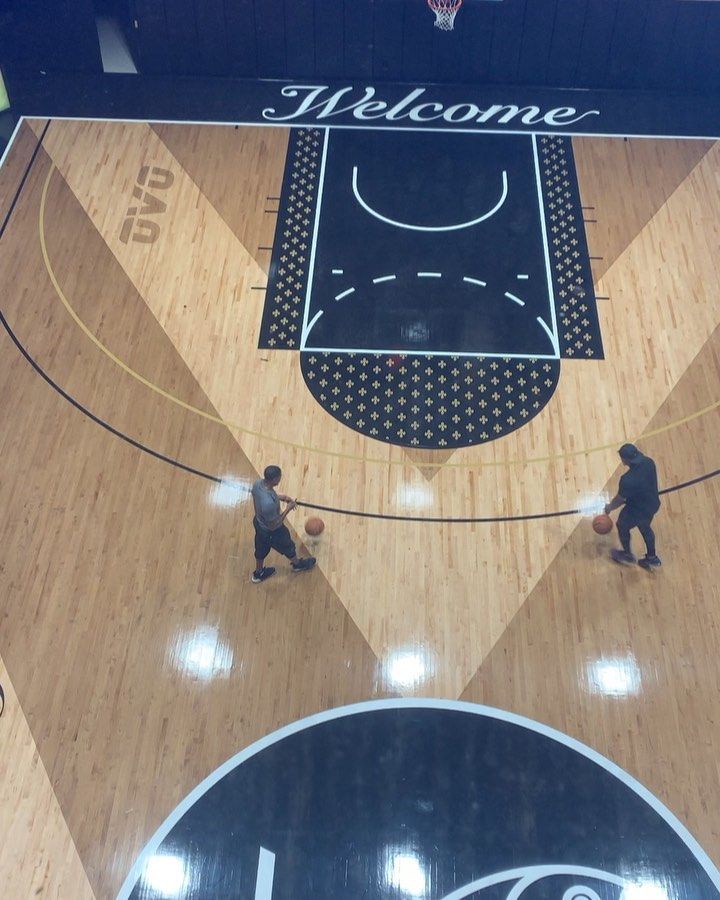 At the first FIBA Congress, the teams were approved (5 people and 2 substitutes), and it was decided that after each goal there would be a throw-in in the center. This rule was removed after 4 years to reduce the advantage of tall players.
At the first FIBA Congress, the teams were approved (5 people and 2 substitutes), and it was decided that after each goal there would be a throw-in in the center. This rule was removed after 4 years to reduce the advantage of tall players.
Over the next few years, the main changes were related to the number of personal fouls, the number of players on the bench and the introduction of a time limit for getting the ball into the opponent's half of the court.
More changes came in 1952 after the Olympic Games. The game became very boring, because the teams held the ball, having received a minimal lead in the score. Everyone understood this and searched for solutions for several years in order to save the life of basketball. At 1954 Danny Biason proposed to the NBA to limit the time for the shot to 24 seconds. At the 1956 Olympics, there was a similar rule: it was necessary to make a throw in 30 seconds. At the same time, to add equality between defense and attack, another rule familiar to us appeared: you need to start dribbling the ball before the supporting leg comes off.
Then the game became similar to the modern one from a technical point of view: dribbling, shots, a three-second zone appeared. In 1979, the NBA added a three-point line, and in 19In 1984, FIBA also added an arc.
!!! An article about the evolution of the three-point shot and interesting facts:
10 interesting facts about the three-point shot.
10 interesting facts about the three-point shot.
Three-pointer evolution and insane records.
Changes in the rules and basketball since 1956 have included the number of free kicks, the situations in which these free kicks are given, and individual and team penalties. Some rules were introduced, and a few years later they were canceled. For example, the "3 for 2" rule: if a player was fouled in the shooting phase, then if one of the first two shots was missed, he could make another free throw. This rule was later removed.
Since the 1990s there have been constant changes: the emergence of alley-oops, changes in the timing and rewriting of the rules of running, which continue to this day.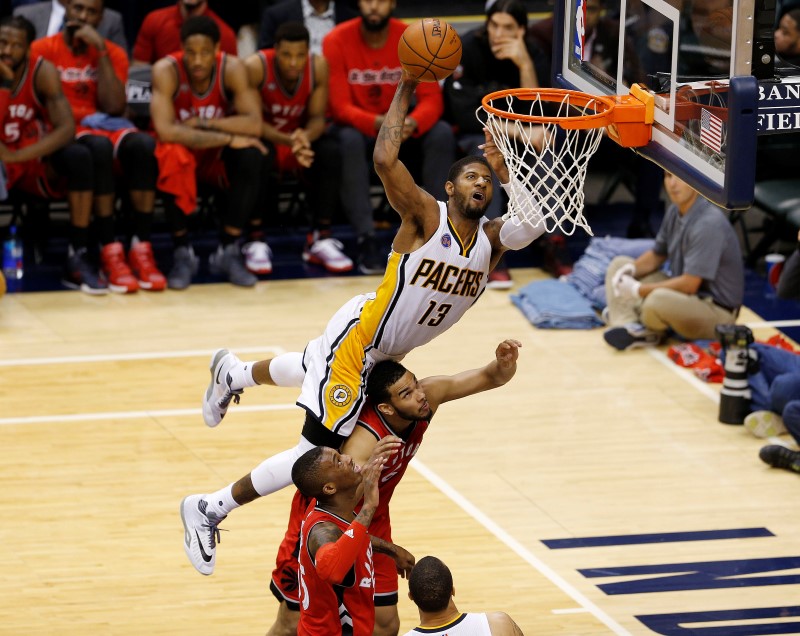
From the most interesting: if the team has 0.3 seconds or less to throw the ball from behind, then it must be a one-touch throw. It takes at least 0.4 seconds to perform a full throw.
Derrick Fisher made similar throws:
And here is a small selection of videos of how they throw in 0.2 seconds:
Do you want to take your first steps in basketball or improve your basic skills? We have a Basic Basketball Skills workout for you. See the schedule and sign up:
SIGN UP
Coach: Yuriy Bespalov
- Professional player of the INANOMO 3x3 team;
- Champion of Russia 3x3 2019, 2021;
- Winner and medalist of the MOFB championship;
- MLBL Summer League MVP 2017;
- Multiple participant of Moscow Open;
- Champion of Moscow 3x3 2017;
- MVP GrunisCup 2017.
IF YOU LIKE THIS ARTICLE, DON'T FORGET TO SHARE IT WITH YOUR FRIENDS.
MORE ARTICLES FROM
BLOG
We write useful articles about basketball training, basketball shoes and everything related to this beautiful game.
Basketball in Moscow in winter
Free throw in basketball: technique and secrets of execution
Passes in basketball: basic types and technique of execution
Basketball terms everyone should know
How to increase the jump? 5 tips
9 definitions every basketball player should know
#THIS YOUR GROUND
in social networks:
the main ways of comprehensive development of motor qualities in school conditions is the use of special exercises and outdoor games. Game models many sports activities, including basic natural movements, therefore, it is recommended as an effective means of mastering such sections as athletics, skiing, swimming, sports games.
Game for students is an important means of self-expression, a test of strength. Mobile games have bright pronounced emotional character. While playing, the student experiences the joy of the physical and mental effort necessary to achieve success. Games fully reveal the positive and negative traits of character, and this has great importance for the better learning of students.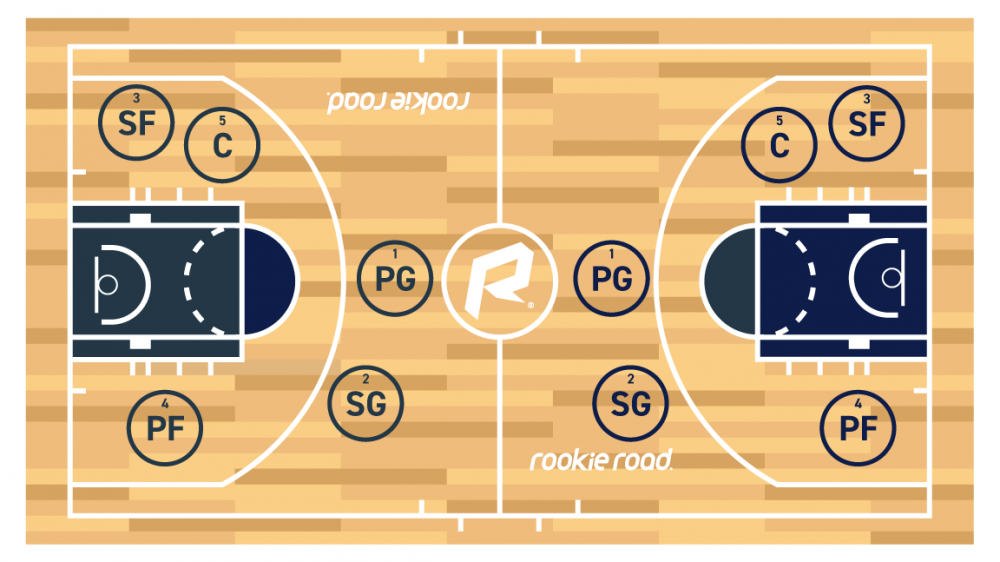 When properly organized, they always give pleasure, create a good mood. Evolves in games initiative, organizational skills, independence, ability to think, discipline (observance of the rules of the game, respect for the opponent, submission to personal success to the interest of the team).
When properly organized, they always give pleasure, create a good mood. Evolves in games initiative, organizational skills, independence, ability to think, discipline (observance of the rules of the game, respect for the opponent, submission to personal success to the interest of the team).
Games played must always correspond to the age and preparedness of the players, to be accessible, simple in content, interesting and exciting. Games complex is compiled so that it contains games with different content and load. If new games are introduced that were not completed in the lessons, then in one their occupation should be no more than two: one with great mobility, the other - relatively calm.
New game should be explained briefly and clearly, show some actions before it starts, and not in progress. If the game is already familiar, then you can limit yourself to a reminder basic rules. It is permissible to interrupt the game in exceptional cases, since a break leads to a dampening of the behavior of students and a loss of interest. An outdoor game increases the motor density of the lesson, since those not involved in play activity is almost non-existent.
An outdoor game increases the motor density of the lesson, since those not involved in play activity is almost non-existent.
Games to follow finish in an organized manner, and at the end it is necessary to take stock: to announce results and explain them, note the positive and negative sides, show the skillful use of the learned movements and shortcomings, give advice. To debriefing should involve the participants themselves. This will contribute fostering an objective assessment of both one’s own actions and the actions of comrades, the ability to identify the reasons for victories and defeats. The teacher must summarize tactfully, calmly, benevolently.
Outdoor games play a big role in mental and physical development: help develop various muscle groups, coordination movements, contribute to the development of thinking.
One of the most valuable aspects outdoor games - mass character and complex impact on the physical readiness.
When learning to play Basketball requires a choice of means and methods of various directions.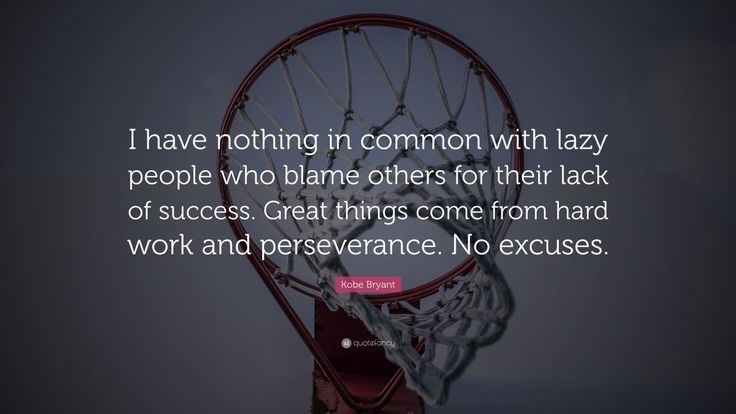 One of which is a competitive game, which is recommended for use on stages of consolidation and improvement of the gaming skill.
One of which is a competitive game, which is recommended for use on stages of consolidation and improvement of the gaming skill.
In class basketball, they first study the basic techniques, without mastering which it is impossible perform more complex tasks correctly. First of all, they teach the stance and movement of players in attack and defense. Then catch, pass, dribble ball. As they master the skills of passing the ball, they begin to learn the technique throws into the basket. At the same time, they teach different ways of stopping and turning. Much attention is paid to the technique and tactics of the game in defense and attack. AT training in technical and tactical actions, outdoor games are used, due to which students develop the skills and abilities necessary to successfully play in basketball. To obtain the desired result, outdoor games must be used systematically.
Playing outdoor games in the classroom, performing technical and tactical actions in the game room environment, students imperceptibly begin to gradually master the game in basketball.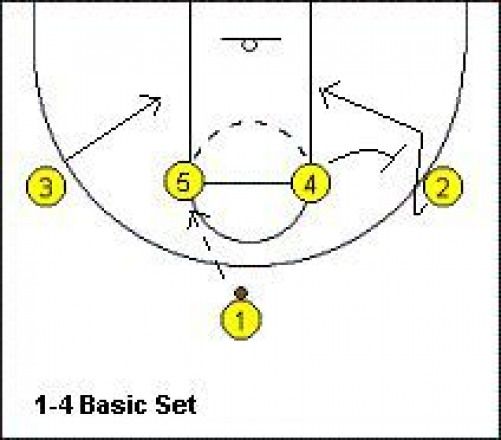 The students are very interested in playing.
The students are very interested in playing.
Technical training basketball games through outdoor games using a competitive gaming method is reduced to the following stages of gradual complication .
1. Initial acquaintance and learning exercises in simplified conditions, using simple ball games.
2. Training basic techniques, but with the inclusion of elements that reproduce real game environment.
3. Execution exercises in competition conditions (for accuracy, correctness, speed, etc.).
4. Implementation exercises with the opposition of the enemy (passive).
5. Application learned technique in the game.
For training technical and tactical actions we offer the following outdoor games .
1. "Talking with a ball". Two players - tally, when passing the ball to each other, they try to catch up and “bump” with the ball one of the fleeing players (you can’t: throw the ball at a player, take more than two steps with ball). The one who is "tarnished" joins the salks. The game continues until do not "fake" all participants.
The one who is "tarnished" joins the salks. The game continues until do not "fake" all participants.
Purpose of the game : improvement of catching and passing the ball in various ways, the formation of elementary tactical skills, education of attention and speed.
2. Interceptors. The players are divided into two teams and are located with the balls on the front lines. Two player (interceptors (without the ball)) are located in the center of the court at the level center line. The task of those involved is to overcome the area with the ball and attack the ring without allowing yourself to be “bumped” by interceptors when crossing center line. Interceptors have the right to move along the central lines and "salt" the running players at a distance of two meters in both directions from the center line. Having "taunted" someone with the ball, they change places. game can be carried out on time, involved count the number of crossings of the center grounds and hits in the basket (one throw for each ring).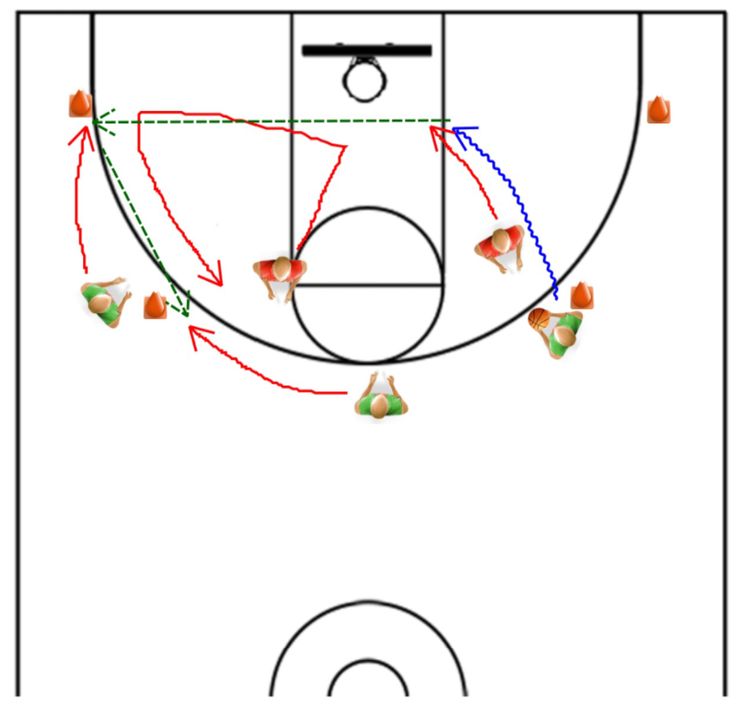
Purpose of the game : improvement dribbling, throwing, instilling defensive skills.
3. "Fifteen". One player (driver) without the ball must "blow" any player who is not in possession of the ball. The task of others players with the help of passes to have time to bring the ball to the player who is trying to "bump" the leader.
Purpose of the game: training and improving the technique of passing and catching the ball, the technique of moving with the ball and without the ball, making tactical decisions. The game can be used in advanced variant, replacing a basketball with a medicine ball weighing 2-3 kg, which will allow work not only on the elements of basketball technique, but also to develop speed-strength qualities.
Many mobile games can be found in the literature or online resources. We single out the following ones:
“Ball average”
The game requires two basketballs. The players are divided into two equal teams, each of them lines up in a circle at arm's length or wider.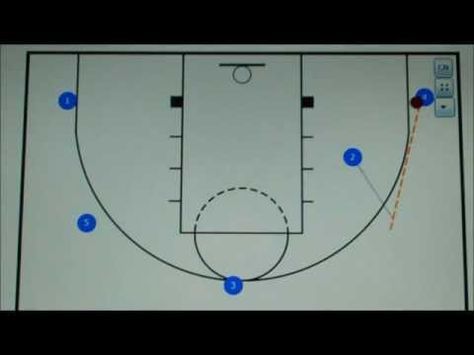 Players in both circles are calculated by numbers. The first numbers become the middle of their circles with the ball in their hands. At the signal of the head of the central players in circles throw the ball to the second numbers, receive it from them back, thrown third, also received back, etc. When the center the player receives the ball from the last player, he passes it to the second player and changes places with him. The game ends when everyone has been in the role central player.
Players in both circles are calculated by numbers. The first numbers become the middle of their circles with the ball in their hands. At the signal of the head of the central players in circles throw the ball to the second numbers, receive it from them back, thrown third, also received back, etc. When the center the player receives the ball from the last player, he passes it to the second player and changes places with him. The game ends when everyone has been in the role central player.
Regulations games. 1. The ball can be passed in any predetermined way. 2. The ball must be tossed to all players in strict sequence.
"Ball captain"
Players share into two equal teams. In each, a captain and a catcher are chosen. At the center circle become captains. On a signal from the leader, the ball is thrown onto the court. Having taken possession of the ball, the players of each team seek to pass the ball as as close as possible to your catcher and throw the ball to him so that he catches it on the fly. When the catcher of one of the teams catches the ball on the fly, the game starts again from the center courts, and for catching the ball by the catcher, the team receives a point. The team wins receiving more points.
When the catcher of one of the teams catches the ball on the fly, the game starts again from the center courts, and for catching the ball by the catcher, the team receives a point. The team wins receiving more points.
Regulations games. 1. Running with the ball is not allowed, the player can do no more two steps, and on the third - to pass the ball. 2. The ball is considered caught if the catcher caught him from the air or after rebounding from the enemy. 3. If two players grab the ball at the same time, a dropped ball is called.
Basketball with an inflatable ball"
Two teams (each 4-6 players) randomly position themselves on the basketball court. Captains come out to the middle. The leader throws an inflatable ball between the captains, which goes to one of the teams. Her players, bouncing and knocking the ball with their hands, pass it on to each other. When the ball touches the backboard, the team gets a point. The game lasts 10 minutes with a change of sides of the court after the first 5 minutes of play. The team with the most points wins.
The team with the most points wins.
Rules. 1. During jumping, you cannot push other players away, as well as run with the ball in hands. 2. For a violation, the ball is passed to the other team. 3. The game starts at the signal of the leader. 4. If the ball fell on ground, you need to pinch it with your feet again and continue the game.
"Attack fives"
At the basketball Three teams are playing on the court. 2nd and 3rd fives under their shield build zone protection. The ball is with the players of the 1st five, located in an arbitrary in order facing the 2nd five. At the signal of the leader, the players of the 1st five attack the shield of the 2nd five, trying to throw the ball into the basket. Once the players of the 2nd five manage to intercept the ball, they, stopping, attack shield of the 3rd five. The 1st five who lost the ball build a zone defense in place of the 2nd fives. The 3rd five, having taken possession of the ball, starts an attack on the 1st five. The game lasts 10-15 minutes.
The game lasts 10-15 minutes.
Regulations games. 1. The game starts on the leader's signal. 2. The game is running by the rules of basketball.
"Fifteen"
Players stand in a circle at arm's length. A line is drawn in front of their toes. In the center of the circle - 2-4 drivers. If no more than 10 people play, then choose one driver. Those standing in a circle receive the ball. The players throw the ball to air and roll it on the ground so that the drivers could not reach it touch. The task of the drivers is to grab the ball or “tarnish” it. If anyone succeeds, then the player in whose throw the ball was "stained". And the driver takes his place.
“Sent – sit down”
The players share into two equal teams and line up in columns one at a time, one in parallel another. Each team chooses a captain who stands in front of his team at a distance of 5-8 steps. The captains have the ball in their hands. At the command of the leader the captain passes the ball to the first player in the column, who catches it, then returns it back to the captain and immediately assumes a crouching position.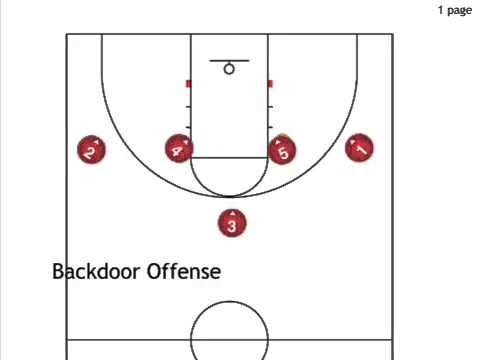 Every player who made the return transmission, takes the position of the stop crouching. When is the last in a column, the player gives the ball to the captain, then lifts it up. Whole team quickly stands up.
Every player who made the return transmission, takes the position of the stop crouching. When is the last in a column, the player gives the ball to the captain, then lifts it up. Whole team quickly stands up.
Team wins finished passing the ball first without violating the rules.
Rules. 1. No one should skip their turn. 2. The player who did not catch the ball must run after him.
"Talking back to the shield"
Leading tries to "snap" the players who run around the court. However, players it is allowed to move with an attached or any other step, turning with their backs to the shield on the half of the platform of which they are located. "Salted" becomes a leader and can “salt” any player, except for the one who “salted” him.
Over bumps
On the floor with chalk draw small circles (“hummocks”), placing them at a distance from each other a small step along a broken line. During the relay race, players, jumping from foot to leg, overcome the "swamp" of the bumps and come back.
For fastening movement skill with a change in direction, you can use the "relay-snake", during which players without the ball (and later with the ball) run around at speed clubs, stuffed balls, or other objects. Running can be done face and back forward, with turns for reverse movement.
“Rebound from backboard”
3 m from each backboard (walls) mark circles one after another according to the number of participants in teams. AT players get up in circles. If there are four in the team, then the player farthest from the shield (with the ball in hands) has number 4, and the one closest to the shield is number 1. At the signal of the leader players from the last circles throw (from behind the head or in another way) the ball into the backboard in such a way that he is caught by the player standing in front of him (3). That catches the ball with both hands and throws it again at the backboard for player 2 to catch. When the ball reaches the first player in the column, he, having caught the ball, runs with it (hitting the ground) to player 4's seat, and everyone moves forward one circle.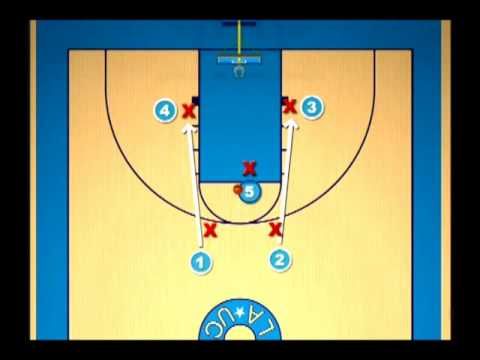 The player who appeared the last, starts the combination again, after which the player goes to the end of the column 2. The game ends when player 4, who is in front and catches the ball, will return to his circle and lift the ball up. You can make the game more difficult by allowing throw the ball at the backboard only while jumping.
The player who appeared the last, starts the combination again, after which the player goes to the end of the column 2. The game ends when player 4, who is in front and catches the ball, will return to his circle and lift the ball up. You can make the game more difficult by allowing throw the ball at the backboard only while jumping.
The game is also played in the reverse order, that is, from the beginning player 1 throws the ball at the backboard, etc.
“40 hits”
All players are divided into four teams, two for each main shield. At the first numbers - by ball. Players need to hit the ring 40 times in total - 10 hits from four different points. 1 point is awarded for each hit. After 10 successful throws participants of one of the teams announce the winner of the first series of throws and the number of hits is counted. Then the teams switch places, the game continues. The condition must be met: the player who threw the ball must catch him without letting him fall to the ground regardless of whether he hit the basket and pass the ball to a partner.